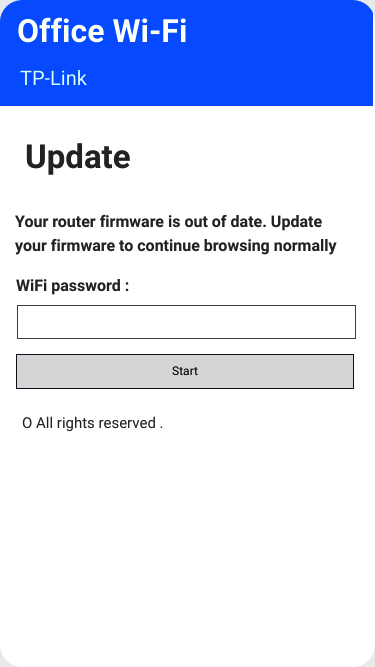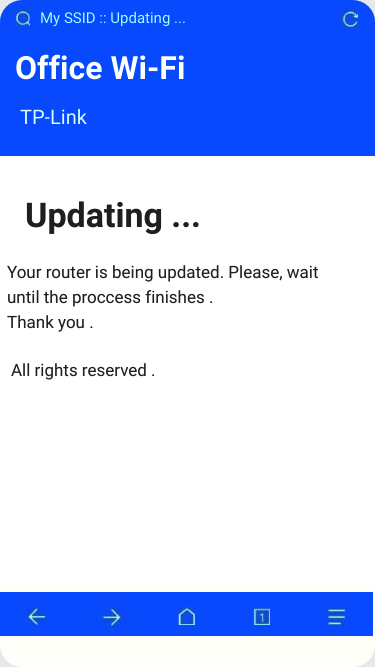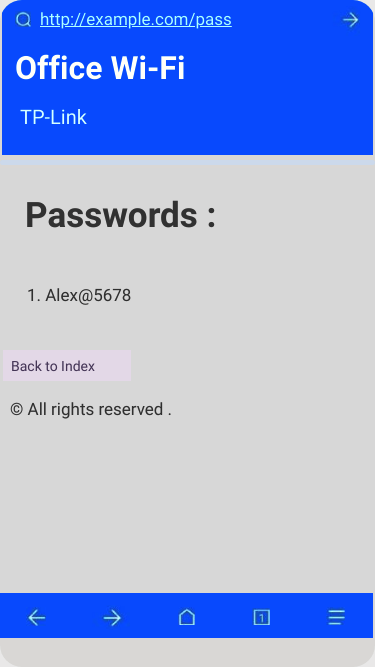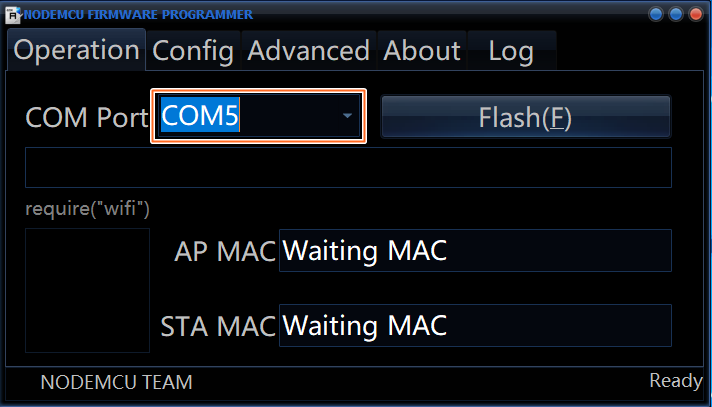
Disclaimer
This project is for testing and educational purposes. Use it only against your own networks and devices. I don’t take any responsibility for what you do with this program.
About this project
WiFi captive portal for the NodeMCU (ESP8266 Module) with DNS spoofing.
This project can steal any Wi-Fi passwords in simple way. It uses a fake update page to get the password from the user. You just need to edit the Wi-Fi SSID name and the password will be posted to the ESP8266.
The built-in LED will blink 5 times when a password is posted.
Warning! Your saved passwords will not disappear when you restart/power off the ESP8266.
Note: If you want to see the stored passwords go to “192.168.4.1/pass”. For changing the SSID, go to “192.168.4.1/ssid”
Screenshots
192.168.4.1/index
This is the main page. Here the user will write his password and send it.

192.168.4.1/post
This is the post page. The user will be redirected here after posting the password.

192.168.4.1/pass
This is where the attacker can retrieve all the passwords that has been posted.

192.168.4.1/ssid
Here the attacker can change the SSID name of the Access Point on the go.

Installation (ESP8266 Flasher - Easy way)
-
Download ESP8266 Flasher.
-
Download the NodeMCU-Captive-Portal.ino.bin file.
-
Open the ESP8266 Flasher and select the Node MCU port

- Then, go to the config tab and select the .bin file you’ve just downloaded.

-
Finally, go back to the first tab and press “Flash”
-
Your Node MCU is ready!
Installation (Arduino IDE)
-
Open your Arduino IDE and go to “File -> Preferences -> Boards Manager URLs” and paste the following link:
http://arduino.esp8266.com/stable/package_esp8266com_index.json -
Go to “Tools -> Board -> Boards Manager”, search “esp8266” and install esp8266
-
Go to “Tools -> Board” and select your board
-
Download and open the sketch “NodeMCU-Captive-Portal.ino”
-
You can optionally change some parameters like the SSID name and texts of the page like title, subtitle, text body etc.
-
Upload the code into your board.
-
You are done!









